Racquetball Recap – Finals at Crossroads
Meet the men behind the racquets and see who reigned as champion, at this year’s racquetball league finals at LA Fitness Irvine Crossroads.
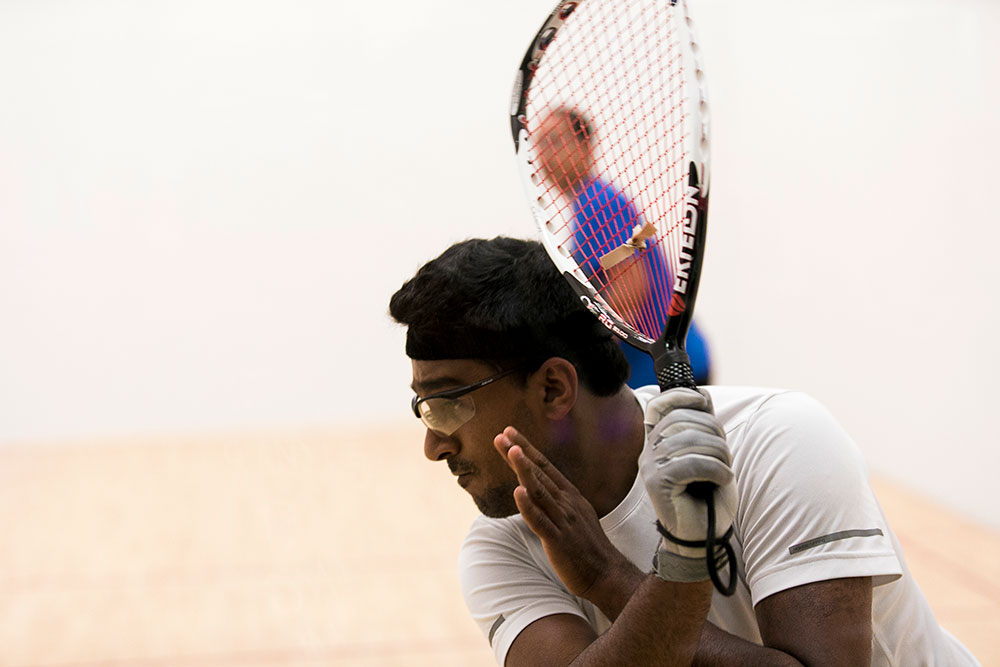
Who said fitness can’t be fun? Finding the right physical activity for you can make a world of difference. Did you know LA Fitness offers Club Leagues on top of Group Fitness classes? This means finding the right workout for you may simply be a matter of sampling all the club has to offer before finding where you fit in. For those of you who enjoy some friendly competition, consider signing up for Club Leagues racquetball. What makes the leagues so great is that they are broken down into different levels, allowing members of all skill sets to play in a fun and well-structured format.
The easiest way to sign up for a league is at the front desk of your local club, or you can sign up for a league online here!
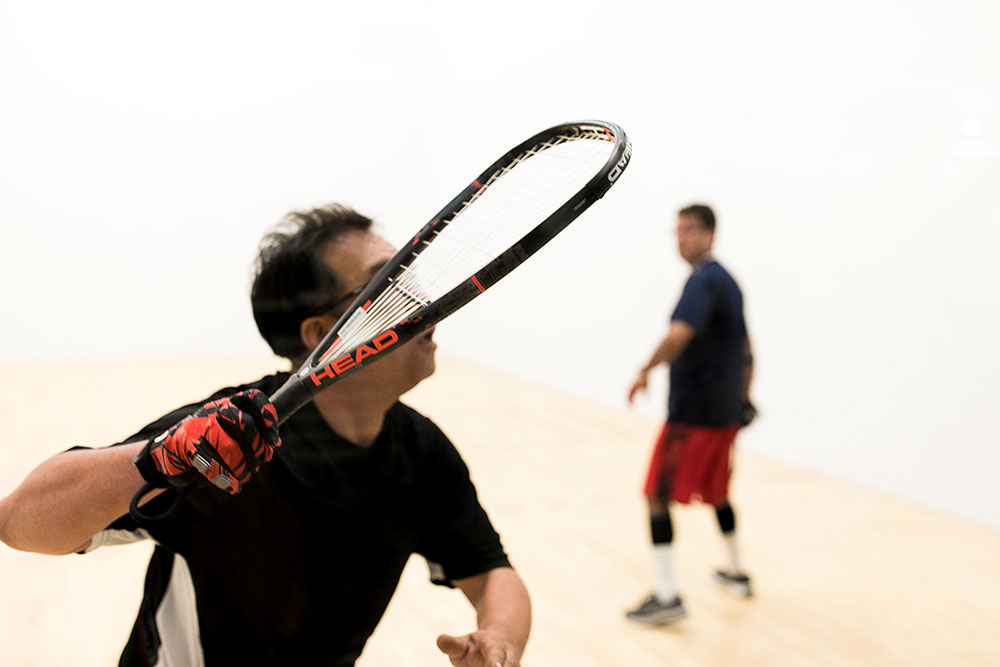
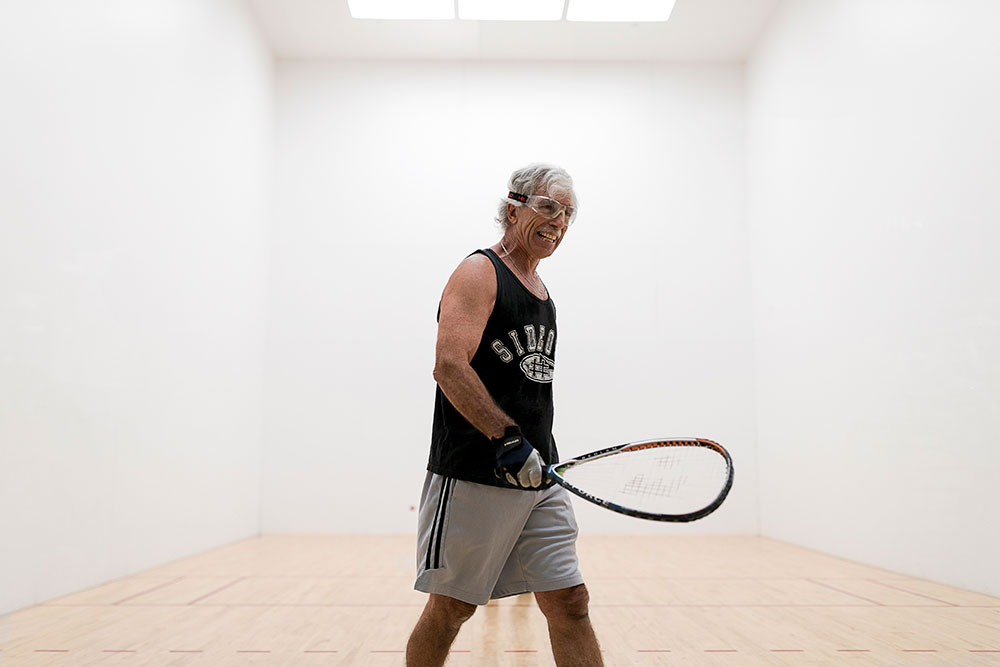
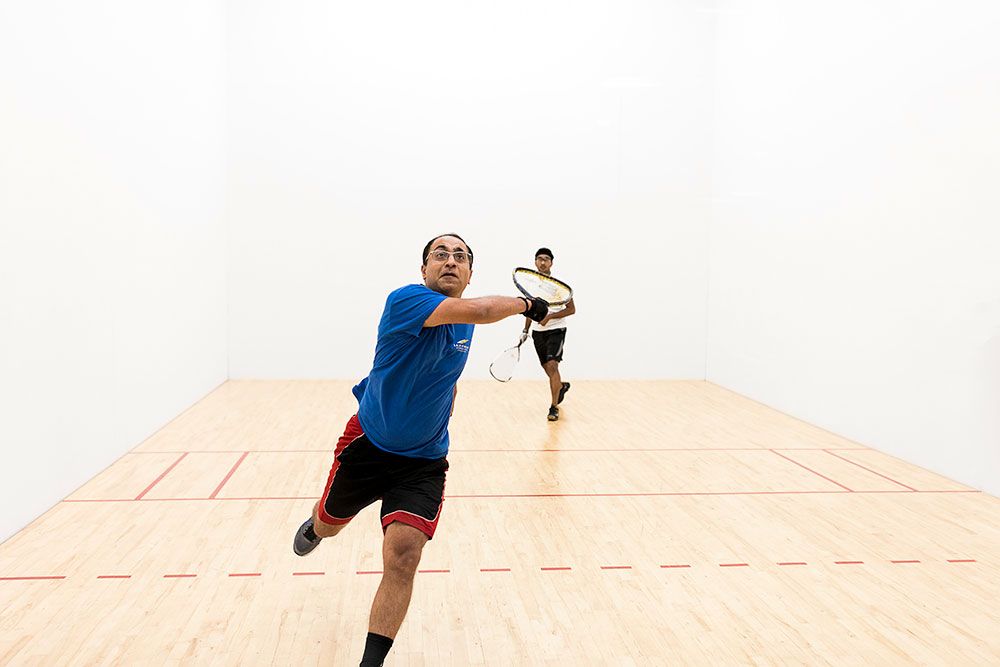

At the most recent racquetball Club League finals, at the Irvine Crossroads location, we spoke with the eight finalists who were competing for the sought-after title of Racquetball Champion. Four teams of two were matched against one another, playing best 2 out of 3. Whomever obtained a score of 11 first then moved on to the next round, until it was down to the final two: Rajesh vs. Ashish. Both men were neck-at-neck, sweat-laden, and refused to go down without a fight. Three rounds of well-played racquetball later, Ashish was victorious!
Ashish was first introduced to Club Leagues racquetball when he witnessed others playing at his LA Fitness. At the time, he was studying abroad for his Masters degree and was looking for ways to stay active and socialize. Ashish shared, “I got involved playing racquetball watching others play in LA Fitness. It’s [a] fast sport, which got me into [the] game. Joining the LA Fitness league definitely boosted my racquetball game.” Now, about five years later from when he first started competing, Ashish is a racquetball champion – way to go!
Participation in Club Leagues requires the payment of an additional fee. League availability and amenities vary by club.

Meet the men behind the racquets and see who reigned as champion, at this year’s racquetball league finals at LA Fitness Irvine Crossroads.
Looking for a fun way to get in shape and join a community? Joining a Club League with LA Fitness gives you the opportunity to compete and stay in shape!
Are you short on time? Get results fast in LA Fitness’ Power Circuit! Power Circuit is a high intensity Group Fitness class offered exclusively at LAF.
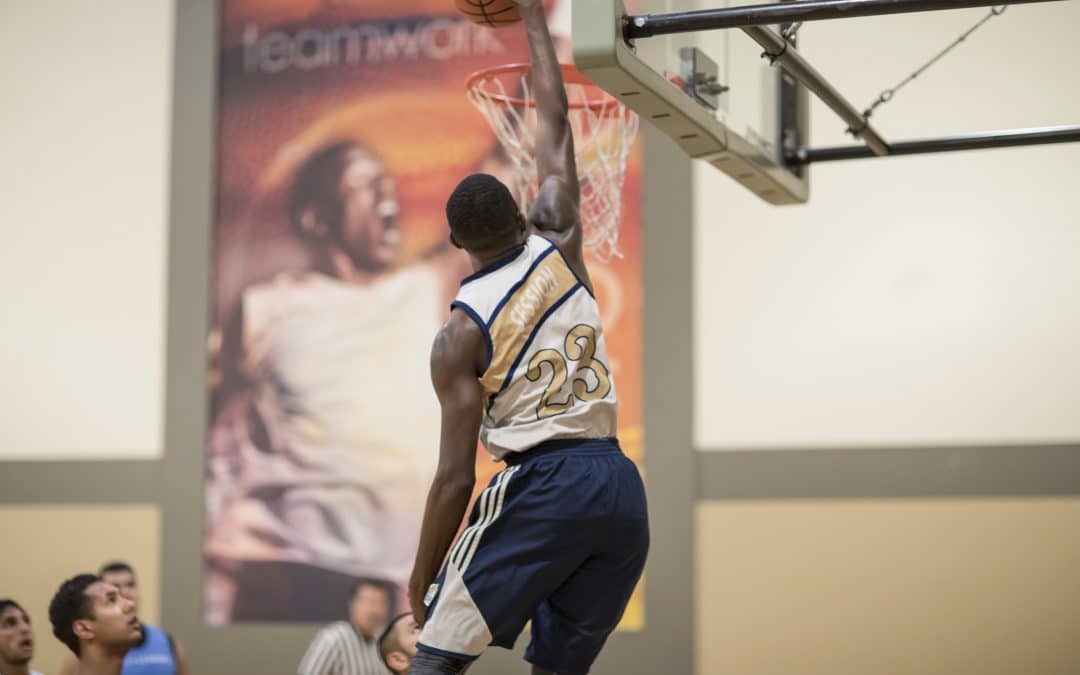
Club League Basketball is not for the weak-hearted. These men come to play.
Sneakers, sweat, and no regrets – it’s a mindset, an attitude, and the thrill of competition that drives the men of LAF’s Basketball Club League to give it their all. As the refs were suiting up, the players were hard at practice as the basketball court at Irvine Michelson was quickly filling up with friends and onlookers, eager to watch the championship game.
As the scoreboard lit up and the whistle blew, the basketball was tossed high in the air, and quickly smacked down into play. The game was fast-paced and booming with intensity, layups, and 3-pointers. The first basket of the game was made by #47 Lane C. of Team C. By the end of the 1st half of play Team C led 27-23.
As the second half began, Team O (last year’s champions) knew they were up against a team who wanted the win just as badly as they did. The ball was tossed from player to player, back and forth across the court, seemingly picking up speed as the clock quickly clicked down. Both teams gave it their all, but the final score was in favor of Team C with a win of 68-57.
With a win for Team C, and last seasons’ win from Team O, who will take it next season? Keep training, guys!

Club League Member Experiences:
Dean A. #1, of Team C, heard about club league basketball through his friend Lane. He enjoys how well-organized the league is and that the games start on time, especially with everyone’s busy schedules.
Frank Z. #5, of Team O, has been a part of the basketball clubs leagues since they first started. He enjoys how the people he plays alongside are friends of his both on and off the court.
It was Charles B.’s #4, of Team O, first season participating in club league basketball, and he said he will definitely be back next season! He had originally heard about the league while he was shooting hoops in the basketball court and a few people approached him and asked if he wanted to join their team – it’s a great way to become more social at the gym while getting a great workout!
If you’re interested in joining an LA Fitness Club League, click here for more information.

Secure your spot for next season today! We offer basketball, volleyball and racquetball leagues – see you on the court!
Our Club Leagues both competitive & recreational are open to members of all skill levels who are 18+.
Meet the men behind the racquets and see who reigned as champion, at this year’s racquetball league finals at LA Fitness Irvine Crossroads.
Looking for a fun way to get in shape and join a community? Joining a Club League with LA Fitness gives you the opportunity to compete and stay in shape!
Are you short on time? Get results fast in LA Fitness’ Power Circuit! Power Circuit is a high intensity Group Fitness class offered exclusively at LAF.
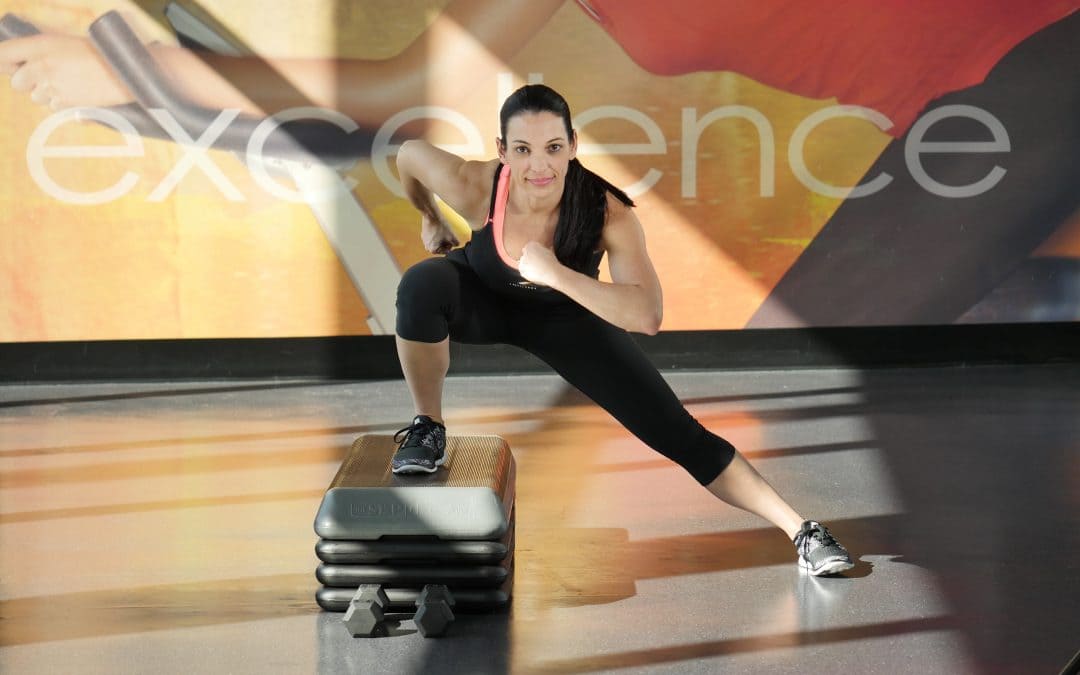
“Power Circuit has changed not only my own fitness level as an instructor, but I’ve seen it affect many members who attend my classes. I have witnessed the benefits in changes to my physique, and most definitely my endurance level. Because of Power Circuit, I’m able to take my other classes to a greater intensity.”
Are you short on time? Get results fast in LA Fitness’ Power Circuit! Power Circuit is a high intensity Group Fitness class offered exclusively at LA Fitness. It consists of highly concentrated quick circuit intervals that challenge your aerobic threshold, while integrated weight lifting helps build bone mass. Power Circuit is a class designed for most age groups, with the ability to modify moves, based on your body’s preferences.
When you take Power Circuit, you can expect to have a high intensity aerobic exercise matched with a short recovery period. The overall or total quick sets last usually about 4 minutes in duration. These quick sets may consist of body squats, step exercises, planks, pushups or use of the step platform. The non-choreographed structure is what keeps the class exciting! Usually, the class ends with ab targeted exercises, aiding in toning your mid-section; which helps leave you feeling stronger, longer.

Power Circuit classes are fresh and creative. The un-choreographed structure helps keep things feeling new and interesting from class-to-class. Lightweights are incorporated into routines, helping to intensify the sculpting of your body. It may seem like a simple workout – but don’t let the lightweights fool you. The high rep count makes the weight of the dumbbells felt fast. The instructor will often times adjust the class based on each individual’s capabilities. For example, an instructor may adjust the number of sets for a particular move if they deem it necessary for the class.
Power Circuit is far from easy – and after just one session you may see how satisfying of a workout it really is for you. It’s a challenging, yet well-worth-it, full- body workout. So, are you up for the challenge?
I asked Power Circuit Instructor, Joanna M., to share her thoughts on why members should choose Power Circuit over other aerobic options offered. This is what she had to say:
JM: In my mind, Power Circuit is a type of catalyst; a place where increased fitness levels take place, changing the dynamics of every other class one may attend. Everything increases in intensity, when the adrenaline hits!
Q: What do you think sets Power Circuit apart from other Group Fitness classes?
JM: Power Circuit is unique due to the cardio quick sets, along with the elevated balance challenges interwoven throughout the workout.
Advice for Beginners:


Let LA Fitness help you along your fitness journey by trying a Power Circuit class today! And download our mobile app for full access to class schedules and plenty of other helpful information.
Meet the men behind the racquets and see who reigned as champion, at this year’s racquetball league finals at LA Fitness Irvine Crossroads.
Looking for a fun way to get in shape and join a community? Joining a Club League with LA Fitness gives you the opportunity to compete and stay in shape!
Are you short on time? Get results fast in LA Fitness’ Power Circuit! Power Circuit is a high intensity Group Fitness class offered exclusively at LAF.

Congratulations to our Summer 2016 Racquetball Champions!

Congratulations to Susan H. Racquetball Champion of Greenwood, IN.

Congratulations to Pete S. Racquetball Champion of Greenwood, IN.

Congratulations to Isaias V. Racquetball Champion of Coconut Creek, FL.

Congratulations to Matt H. Racquetball Champion of Garden Grove, CA.

Congratulations to Arturo R. Racquetball Champion of Kernan, FL.

Congratulations to Jason H. Racquetball Champion of Kernan, FL.
Want more? SUBSCRIBE to receive the latest Living Healthy articles right in your inbox!
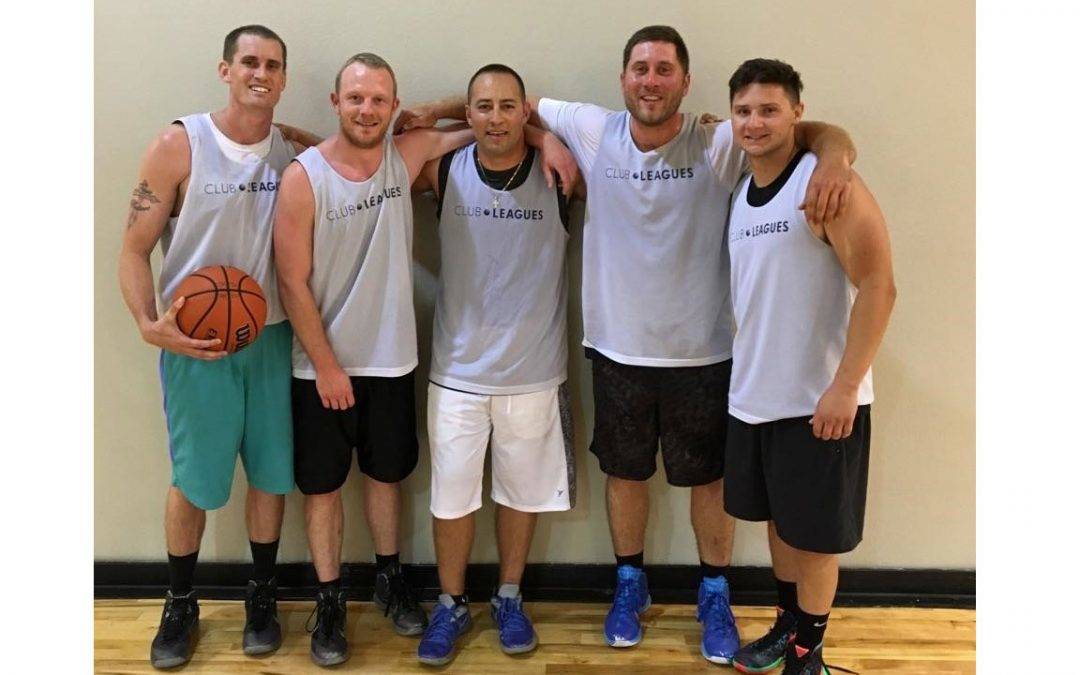
Debbie J., MS, RD contributed this article –
If you play racquetball, volleyball or basketball, then you’re no stranger to the high-intensity physical exercise required to play on the courts. Of course, each sport has its specific skills needed to play effectively, but they are similar in that they all use short burst anaerobic movements to stay fast on your feet. Compared to field sports where playing fields can consist of upwards of 5,000 square yards, racquetball, volleyball and basketball involve more agility and rapid back-and-forth play since the area of play is much smaller: Basketball; 522 square yards; Volleyball (from baseline to net) 96 square yards; and Racquetball 88 square yards.
With the stop-and-go action of these sports, the work that your muscles go through is intermittent. This is especially true for team sports with some team members sitting on the bench awaiting play and muscle recovery happens between bouts of activity. Also, there is no specific muscle group at continuous work and continuously during play (unlike distance sports); rather, varying muscles are engaged as needed for sprinting, crouching, jumping, pushing and/or swinging. This creates an underlying overall aerobic demand, which varies especially when play lasts for an hour or more at a time.
A player’s carbohydrate needs vary depending on the type of high-intensity play, duration of physical exertion and rest periods, and overall length of the game. The frequency of games impacts metabolic demands; for instance, multiple matches in one day (as in tournament competition) is one example of that requires a heavy demand of carbohydrates. Read on to find out how to fuel these needs before, during, and after playing these high-intensity sports.
Calories
Having sufficient energy to complete a competition is immensely important.
Below are the approximate number of calories burned while playing basketball, volleyball, and racquetball, calculated from The Compendium of Physical Activities (2011)1:
| Over the course of 60 minutes of play: | 160 pound person will burn approximately: | 200 pound person will burn approximately: |
|---|---|---|
| Basketball | 581 Calories | 727 Calories |
| Volleyball | 436 Calories | 545 Calories |
| Racquetball | 509-727 Calories | 636-909 Calories |
Remember to adjust depending on your weight, as well as the number of games that you might play during “league competition” up to three 60 minute games for volleyball & basketball, and up to three 15 minute games for racquetball.
A good piece of advice is to consume half the anticipated calorie need prior to the session in solid food, a quarter during exercise in the form of sports drinks and a quarter in recovery nutrition afterward.
First and foremost, you need to be in balance energy-wise for the day. It’s not a good idea to come into a game with an energy deficit and try to make up for it by eating a bunch before you play. Your stomach will agree here!
Composition
Think carbohydrates (carbs) first, then protein and fat. Whether during aerobic or anaerobic work, muscles use glycogen and blood glucose (carbohydrates) for fuel. Most studies show that ingesting carbohydrate before and during play enhances intermittent high-intensity exercise capacity.2 Though, carbohydrates are the primary nutrient used to fuel muscle work, fat may contribute in longer practice sessions and multiple game playoffs. If inadequate carbohydrate is consumed, highly specialized protein might be burned to meet energy demands. You don’t want to sacrifice protein (the main constituent of muscle) for fuel, since protein is needed for so many other functions.
Carbohydrates should be easily digestible (often called “high glycemic”) for rapid energy and replenishment. Choose low fiber starches and fruit products like pretzels, water crackers, rice, pasta, canned fruit, applesauce and bananas. Sports drinks should have about 15 grams of carbohydrate per 8 fl. oz.; and the carbohydrates should come from glucose, fructose, or sucrose. For longer matches, carbohydrates may also come from maltodextrin. Take a tip that some competitive athletes follow and consume about 30-60 grams of carbohydrates per hour during play and practice. Remember, to finish a competition with strong performance, you can’t be in a carbohydrate deficit.
Protein and fats should provide the remainder of your calories. Prior to game time, choose easily digestible protein sources such as egg whites, poultry breast, fish, soymilk/tofu, avocado and oils. If your body can tolerate dairy, yogurt is another good choice. Leave the heavy items like cheese, bacon and nuts for another time. During play, a small amount of protein (5-10 grams) in a sports drink is fine but not necessary. Postgame foods include up to 25 grams of protein in your recovery snack, bar or shake.
If you’re fueled and ready to play racquetball, volleyball or basketball, check out a list our available LA Fitness Club Leagues.
References
1. “2011 Compendium of Physical Activities: A Second Update of Codes and MET Values.” Ainsworth BE, et al. Medicine & Science in Sports & Exercise. 2011; 43:1575-1581. Basketball, game 8.0 METs (Taylor, Jacobs et al. 1978); Volleyball 6 METs; Racquetball 7-10 METs (Kcal/kg/hr)
2. “Acute effects of carbohydrate supplementation on intermittent sports performance.” Baker LB, Rollo I, Stein KW, Jeukendrup AE. Nutrients. 2015; 7(7):5733-5763.
Meet the men behind the racquets and see who reigned as champion, at this year’s racquetball league finals at LA Fitness Irvine Crossroads.
Looking for a fun way to get in shape and join a community? Joining a Club League with LA Fitness gives you the opportunity to compete and stay in shape!
Are you short on time? Get results fast in LA Fitness’ Power Circuit! Power Circuit is a high intensity Group Fitness class offered exclusively at LAF.
Be the first to know about exclusive
content, deals and promotions